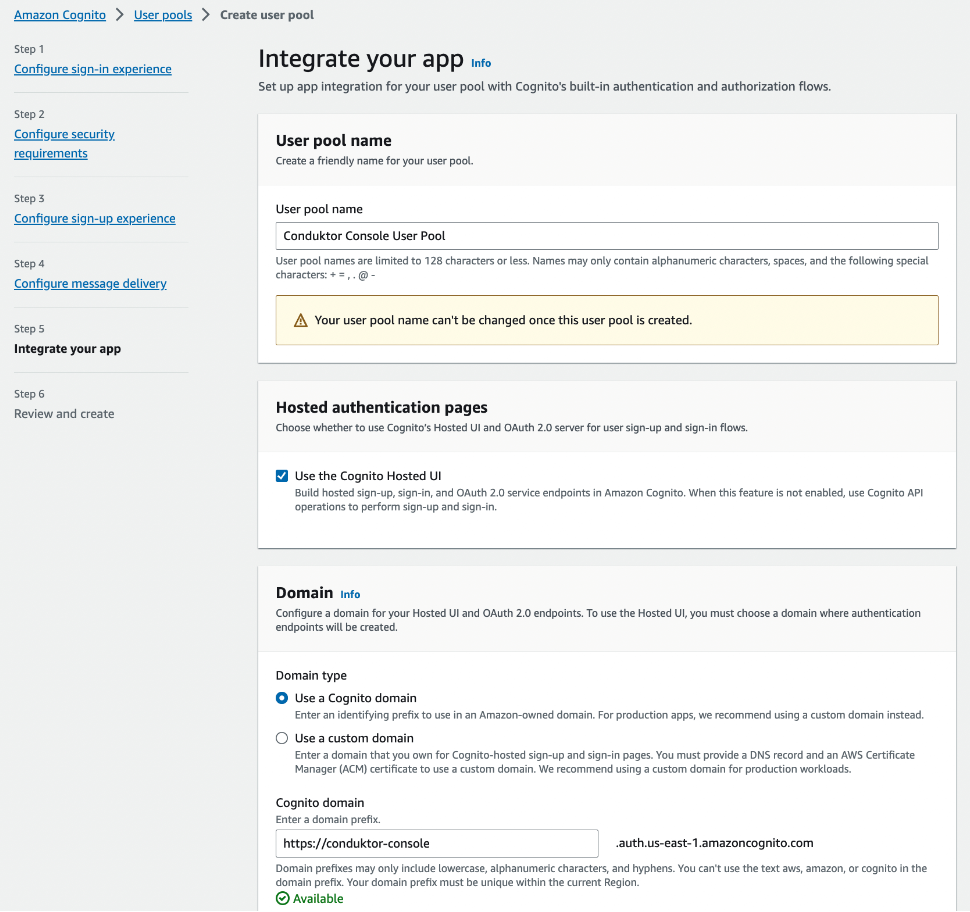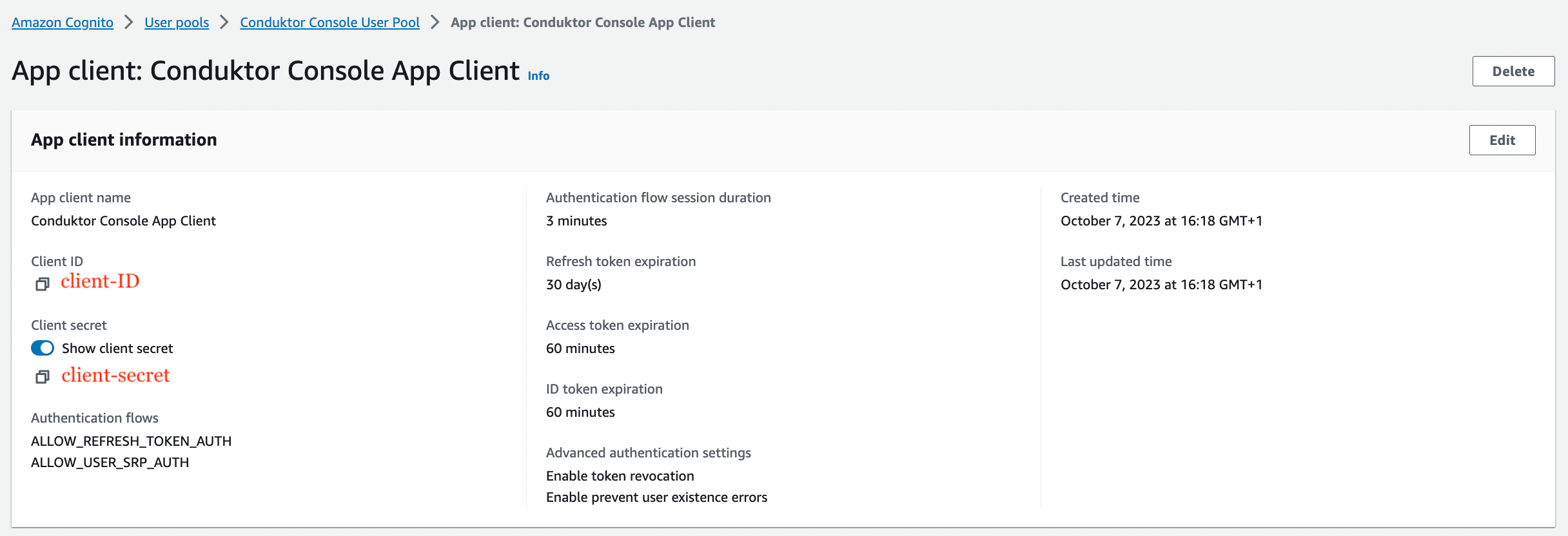Configure Amazon Cognito as SSO
Amazon Cognito Configuration
On Amazon Cognito side, you'll have to create a user pool with an application:
- Step 1: Create a new user pool

- Step 2: Configure the application client
You can select the name you want, shown here as Conduktor Console, and enter the redirect URI as the following: http(s)://<Console host>(:<Console port>)/oauth/callback/<OAuth2 config name>.
For example, if you deployed Console locally using the name cognito in your configuration file, you can use http://localhost:8080/oauth/callback/cognito, like in the screenshot below.
For more details on Console redirect URI for OAuth2, you can check the documentation.
Make sure that a client secret will be generated. You can select Confidential client for that.

- Step 3: Set the scopes
profile,email, andopenidin the Advanced app settings

- Step 4: Get the
user pool ID,client ID, andclient secret, that you'll use in the configuration file of Console


You can find the .well-known at: https://cognito-idp.<region>.amazonaws.com/<user pool ID>/.well-known/openid-configuration.
Console Configuration
On Console side, you can add the snippet below to your configuration file. You have to replace the client ID, client secret, region, and pool ID, with what you got during step 4.
- YAML File
- Environment Variables
sso:
oauth2:
- name: "cognito"
client-id: "<client ID>"
client-secret: "<client secret>"
openid:
issuer: "https://cognito-idp.<region>.amazonaws.com/<user pool ID>"
CDK_SSO_OAUTH2_0_NAME="cognito"
CDK_SSO_OAUTH2_0_DEFAULT=true
CDK_SSO_OAUTH2_0_CLIENT-ID="<client ID>"
CDK_SSO_OAUTH2_0_CLIENT-SECRET="<client secret>"
CDK_SSO_OAUTH2_0_OPENID_ISSUER="https://cognito-idp.<region>.amazonaws.com/<user pool ID>"
Groups Configuration
If you want to use the external groups mapping to map groups between your Conduktor Console instance and Amazon Cognito, you must set the property groups-claim to "cognito:groups" in the Console configuration file. Below is the full snippet for your configuration file:
- YAML File
- Environment Variables
sso:
oauth2:
- name: "cognito"
client-id: "<client ID>"
client-secret: "<client secret>"
groups-claim: "cognito:groups"
openid:
issuer: "https://cognito-idp.<region>.amazonaws.com/<user pool ID>"
CDK_SSO_OAUTH2_0_NAME="cognito"
CDK_SSO_OAUTH2_0_DEFAULT=true
CDK_SSO_OAUTH2_0_CLIENTID="<client ID>"
CDK_SSO_OAUTH2_0_CLIENTSECRET="<client secret>"
CDK_SSO_OAUTH2_0_GROUPSCLAIM="cognito:groups"
CDK_SSO_OAUTH2_0_OPENID_ISSUER="https://cognito-idp.<region>.amazonaws.com/<user pool ID>"
External Groups Mapping
Now that your configuration is finished, you can setup the mapping between Amazon Cognito and Console groups. That way, when a user logs in, they will be automatically added to the corresponding Console groups, based on the groups they belong to in Amazon Cognito.
The value you need to put as an external group is the Object ID of the Amazon Cognito group.